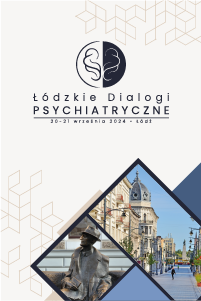Agomelatine – pharmacological properties and use in psychiatric practice
Marcin Siwek1, Anna Wasik1, Anna Krupa2
 Affiliacja i adres do korespondencji
Affiliacja i adres do korespondencjiAlthough a plethora of studies have been conducted and guidelines for clinical practice have been delineated and are conscientiously implemented, the outcomes of depression treatment still do not meet the expectations. Only 60–70% of patients respond to treatment and 30% achieve remission after the first course of antidepressant pharmacotherapy. Others remain fraught with residual symptoms and, as a result, aren’t able to reach their optimal level of occupational, family and social functioning, and the overall quality of life. The adverse effects of antidepressant treatment, which diminish patients’ adherence, are an another troublesome issue. This leads to a search of new antidepressant drugs, not only efficacious in relieving depression symptoms, but also well tolerated. Agomelatine was first registered as an antidepressant in Europe in 2009. It has a distinct mechanism of action (5-TH2C antagonism and MT1, MT2 agonism) and an extraordinary treatment tolerance. Furthermore, the profile of adverse effects differs from selective serotonin reuptake inhibitors and serotonin–norepinephrine reuptake inhibitors. This raises hope that agomelatine will help improve the results of mood disorders treatment. Numerous studies, both observational and clinical, have compared agomelatine to placebo and other antidepressants proving its efficacy in reducing depressive symptoms, especially anhedonia, the co-occurring anxiety and sleep difficulties. Agomelatine is efficient in treatment of depression comorbid with somatic disease (type 2 diabetes, chronic kidney disease, Parkinson’s disease and cardiovascular conditions). Although sparse, there is data suggesting that agomelatine is useful in the treatment of depressive episodes in bipolar and seasonal affective disorder, anxiety disorders, fibromyalgia and migraine.















